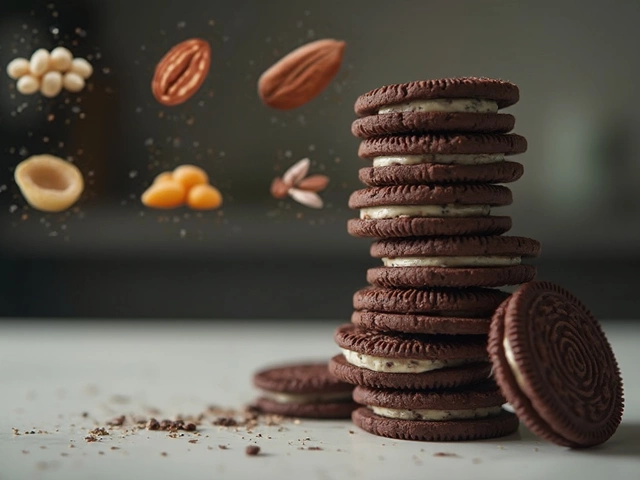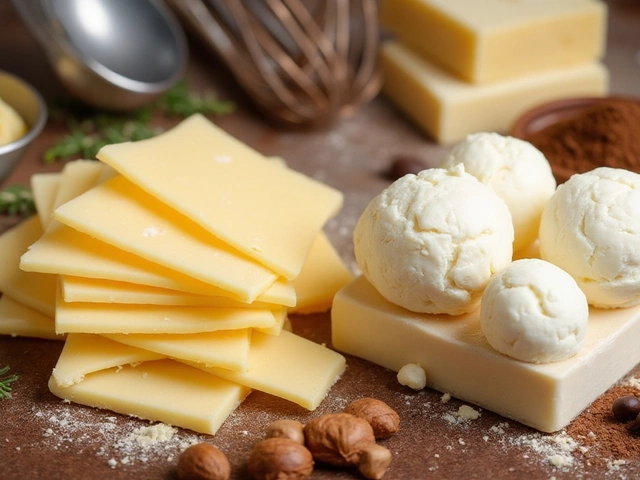
Gluten-free cakes might sound like a mythical beast if you're new to the world of gluten-free baking. But they're a very real—and tasty—option for many. People avoid gluten, a protein found in wheat, barley, and rye, for health reasons like celiac disease or gluten intolerance. Whatever the reason, gluten-free doesn't mean taste-free.
The secret to a good gluten-free cake lies in the right blend of ingredients. Instead of wheat flour, you'll find alternatives like almond, rice, or even coconut flour. These flours have different properties, so it's really about experimenting to find what you and your taste buds prefer.
- Understanding Gluten
- Why Go Gluten-Free?
- Choosing the Right Ingredients
- Tips for Baking Gluten-Free Cakes
Understanding Gluten
So, what's gluten anyway? Well, gluten is a group of proteins found in wheat and grains like barley and rye. It's the stuff that gives bread and cakes their structure and chewiness. Think of it like the glue holding everything together in your favorite baked goods.
For most people, gluten is no big deal. But for folks with celiac disease—a genetic autoimmune disorder—even a tiny amount of gluten can wreak havoc on their small intestine. That's why going gluten-free is crucial for those affected. It’s estimated that about 1% of the global population has celiac disease. Then there’s gluten sensitivity, which is less severe but causes discomfort.
Why is Gluten Important in Baking?
In the baking world, gluten is kind of like the super-hero. It helps dough rise, gives it elasticity, and creates that lovely, spongy texture in cakes that we all love. When flour and water mix, gluten proteins form a stretchy web that traps air bubbles, making your cake fluffy.
What Happens Without Gluten?
Baking without gluten means missing that stretchy, bouncy texture, so gluten-free cakes often need a bit of extra help. That’s why other ingredients step in to create similar magic. You'll see a lot being said about xanthan gum or guar gum in gluten-free recipes. These little helpers mimic the effects of gluten and help hold things together.
Why Go Gluten-Free?
Going gluten-free is more than just a trend; for some folks, it's a medical necessity. Let's start with people who have celiac disease. It's an autoimmune disorder where consuming gluten harms the small intestine. There's no cure, and the only treatment is a strict gluten-free diet.
Others might have non-celiac gluten sensitivity, which doesn’t cause the same intestinal damage but can cause similar bloating, abdominal pain, and fatigue. Although the medical community is still learning about gluten sensitivity, many find relief in a gluten-free diet.
The Rise of Gluten-Free
Did you know that the gluten-free industry has grown rapidly over the last decade? Thanks to increased awareness and a variety of available products, more people are choosing gluten-free diets even without medical requirements. Whether it's for health reasons or personal preference, the choice often aims for a perceived healthier lifestyle.
Furthermore, some athletes and fitness enthusiasts opt for gluten-free diets hoping for better energy levels and recovery times. Science hasn't proven these claims definitively, but anecdotal evidence keeps the discussion alive.
Is Gluten-Free Healthier?
There's a common belief that gluten-free is automatically healthier, but this isn't always the case. Some gluten-free products can be higher in calories, sugar, and fats to improve taste and texture. However, a naturally gluten-free diet focused on whole foods like fruits, vegetables, and lean proteins can indeed be healthier.
Considering a Switch?
- Look at food labels: Gluten hides in some unexpected places, so reading labels is a must.
- Experiment with flours: Try almond or rice flour for a good start.
- Communicate with your doctor: Especially if you're considering going gluten-free for health reasons.

Choosing the Right Ingredients
When it comes to baking a gluten-free cake, choosing the right ingredients makes all the difference. Unlike traditional baking, where you rely heavily on wheat flour, gluten-free baking offers a wide array of flour choices. Let's take a closer look at some popular options.
Alternative Flours
Many people start with almond flour, known for its moisture and nutty flavor, making it perfect for dense cakes like brownies or chocolate cake. Another go-to is rice flour, which gives a nice crumbly texture, ideal for lighter cakes like sponge cakes.
The often overlooked coconut flour is great for those who love a touch of tropical flavor. However, it's super absorbent, so use it sparingly and be prepared to add extra liquid to your mix.
Binding Agents
Without gluten, you need something to hold your cake together. Enter binding agents! Xanthan gum is a popular choice, providing elasticity and structure to your bake. Don't overdo it, though—just a teaspoon per cup of flour usually does the trick.
Enhancing Flavor
You can enhance flavors with spices and extracts, especially since some gluten-free flours may slightly alter the taste. Vanilla, almond extract, or a dash of cinnamon can really complement your cake.
Baking Mixes
If you're not ready to dive into measuring out individual flours and starches, there are many gluten-free baking mixes available. These mixes have the added convenience of pre-measured gluten-free flour blends, often including a binding agent.
| Flour Type | Characteristic | Best Used For |
|---|---|---|
| Almond Flour | Moist, nutty | Dense Cakes |
| Rice Flour | Crisp, light | Sponge Cakes |
| Coconut Flour | Absorbent, flavorful | Moist Cakes |
Experimenting with different combinations might feel like being a scientist in a lab, but that's part of the fun of gluten-free baking. Finding the right balance and taste is surprisingly rewarding when you nail it.
Tips for Baking Gluten-Free Cakes
Stepping into the world of gluten-free baking can feel like adventure into the unknown. But fear not. A few solid tricks can help you master baking gluten-free cakes without breaking a sweat.
1. Choose the Right Flour Blend
The first step is finding the right flour blend. Unlike regular flour, gluten-free flours vary significantly. A mix of almond flour, rice flour, and a bit of xanthan gum often provides the right texture. Xanthan gum mimics gluten, giving your cake structure.
2. Measure Accurately
It’s not just about taste; it's about texture too. When it comes to gluten-free baking, precise measurements can determine success. Use a kitchen scale for accuracy since even a slight change in ratio can throw off your cake’s consistency.
3. Mix Thoroughly
While overmixing is a no-no in traditional baking, with gluten-free it's different. Since there's no gluten to toughen the batter, it's essential to mix your ingredients well to ensure an even distribution of components.
4. Mind the Moisture
Gluten-free cakes tend to dry out more quickly. Using ingredients like applesauce, yogurt, or mashed bananas can keep your cake moist. Adding an extra egg or a touch more liquid can also help in achieving the moist texture you crave.
5. Bake at Lower Temperature
Consider reducing your oven temperature slightly and bake a little longer. This approach helps prevent your cake from browning too quickly while ensuring the inside is cooked through.
- Example of Baking Temperatures:
Traditional Baking Gluten-Free Baking 350 °F 325 °F
6. Let it Cool Completely
Patience, my friend! Once out of the oven, let your gluten-free cake cool completely before serving. This helps the texture set and makes slicing easier.
There you go! A handful of tips to make your gluten-free baking a piece of cake—pun definitely intended. Experiment and enjoy the wide variety of flavors and textures that gluten-free ingredients offer. Happy baking!





